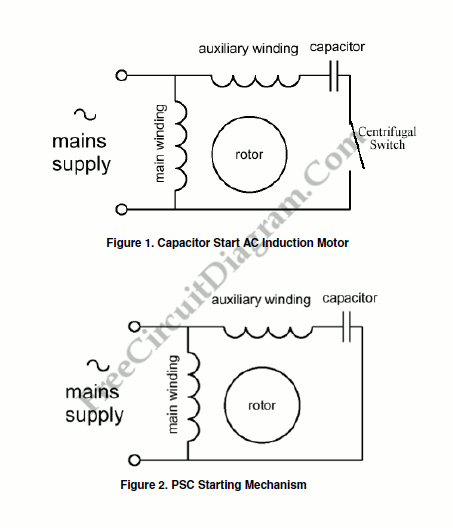Single Phase Induction Motor Control Theory

The most used is single-phase induction motors. This motors operate with a single phase power supply, only have one stator winding and are also squirrel cage. The motor is not self-started when connected to power supply because of the single phase. The motor only vibrate and not rotate because the necessary torque is not generated.

Most single phase motors have a main and auxiliary winding to provide the starting torque, both in quadrature to help generate the phase-shifted magnetic field.
The auxiliary winding current from the main winding is phase-shifted. The motor will start rotate when the capacitor is connecting in series with the auxiliary winding. We can disconnect the capacitor and the auxiliary winding at 75% of the motor nominal speed using a centrifugal switch. We use this topology if high torque is required. The capacitor and the auxiliary winding remain connected in most fan motors. This configuration is called permanent split capacitor (PSC) AC induction motor. Considered to be the most reliable single phase motors, no centrifugal switch is used. They can be designed for optimum efficiency and high power factor (PF) at rated load. [Circuit’s schematic diagram source: Freescale Semiconductor Application Note]